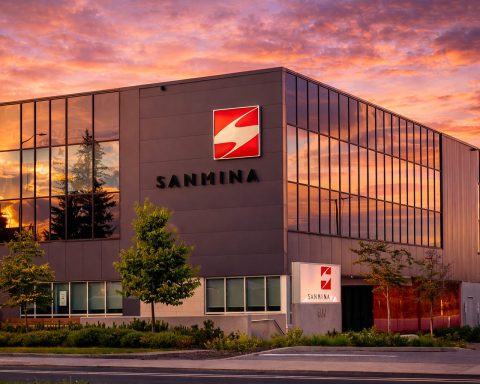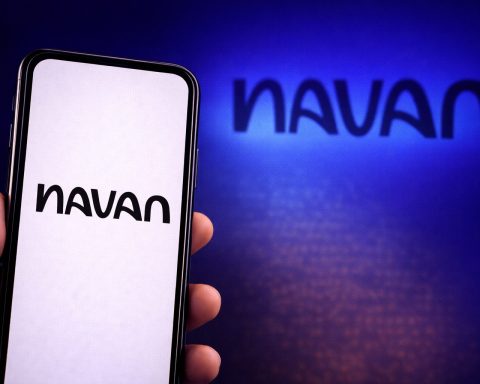- 52-week low: Kenvue shares fell below $15.50 on Oct 16, 2025 (about a 5% one-day drop) [1]. The stock has tumbled over 27% in the past year and is trading near its 52-week low [2].
- High dividend yield: Kenvue’s quarterly dividend ($0.2075) yields ~5.1%, despite a very high payout ratio (>100%) [3] [4].
- Recent results: Q2 (ended June) revenue was $3.84 billion, down ~4% year-over-year, and adjusted EPS was $0.29 (in line with forecasts) [5]. The company has set FY2025 guidance of roughly $1.00–1.05 in EPS.
- Legal headwinds: Kenvue faces new UK talcum-powder lawsuits (∼3,000 claimants) alleging cancer links, potentially raising liabilities [6] [7]. U.S. courts dismissed Tylenol-autism claims last year, but Trump’s comments and a pending FDA label review have spooked investors.
- Ratings & targets: Analysts’ 12-month price targets center around the low-$20s. For example, JP Morgan’s Oct 10, 2025 target is $21.00 [8]. The average consensus target is ~$20.90 (implying ~50% upside) [9]. Barclays, Evercore and others maintain neutral/equal-weight ratings (targeting $17–$20) after the latest FDA warning about acetaminophen [10] [11].
- Credit & outlook: Moody’s recently reaffirmed Kenvue’s A1 debt rating but cut the outlook to negative, citing soft sales and high leverage [12] [13]. Moody’s noted Kenvue may see “negative free cash flows for the year after dividend payments” due to restructuring costs [14].
- Strategic review: In July 2025 Kenvue ousted CEO Thibaut Mongon and named Kirk Perry (ex-P&G) as interim CEO [15]. The board launched a broad strategic review (with Centerview/McKinsey) to consider asset sales or a breakup [16] [17]. Analysts note a higher chance of selling parts of the business, e.g. non-core skin brands [18] [19].
Recent Market Moves
Kenvue’s stock (NYSE: KVUE) has been volatile. On Oct 16, 2025 it closed around $15.46, marking a fresh 52-week low [20]. Over the prior week the shares had slid ~13%, partly driven by jitters over UK talc lawsuits and Trump-era Tylenol claims. Investors bid on options, with call volume surging 52% on Oct 13 [21], even as the stock dipped 2.9% that day to $16.17 [22]. Year-to-date KVUE is roughly flat to down modestly, but it lags the broader market. For context, the S&P 500 was nearly unchanged while Kenvue was down ~5% on Oct 16. A longer view shows KVUE rose after its 2023 IPO but has struggled through 2024–2025 amid headwinds.
Institutionally, Kenvue has a market cap of ~$31 billion and a trailing P/E around 22 [23]. Chart watchers note its 50-day moving average (~$19) is well above current levels [24]. The sharp recent dips mean many investors wonder if KVUE is “on sale” or if fresh catalysts are needed. The dividend was recently raised to $0.2075 per share, underpinning that 5.1% yield [25], which helps some income investors tolerate the pullback.
Latest News & Legal Concerns
Two main headlines have driven the sell-off. Talc lawsuits: On Oct 16, reports surfaced that a UK court would hear ~3,000 cases alleging Kenvue’s (formerly J&J’s) baby powder caused cancer. These cases, if lost, could mean “billions” in damages. Citi analyst Filippo Falorni cautioned that “while the ultimate size of the liability for the UK lawsuit remains unknown, we are cautious about the financial implications for Kenvue given the legal precedent from the US cases” [26]. Kenvue insists its product “did not contain asbestos, and does not cause cancer” [27]. By Oct 16 the stock fell ~5% on this news [28].
The other flashpoint is Tylenol safety claims. In late September the Trump administration and HHS made headlines with an FDA notice suggesting labels mention autism/ADHD risk from prenatal acetaminophen. A Reuters report noted that on Sept 22, President Trump declared “stop taking Tylenol”, triggering a ~9% plunge in KVUE that day [29]. However, regulators (EU, UK) and J&J itself have said no new evidence links Tylenol to autism [30] [31]. Novare Capital’s James Harlow said investors were “holding their breath” expecting a bombshell that never came [32], and indeed the FDA release simply required a label update with no new causal findings. Citi analysts similarly wrote that “we see limited judicial risk” from these autism claims, though the negative headlines could dent Tylenol sales [33]. By Sept 24 Kenvue stock had bounced about 6% from the panic lows [34] [35]. Overall, the Tylenol scare cost Kenvue about $10 billion in market value, according to Reuters, but some experts view it as a short-term blip given the low scientific footing of the claims [36] [37].
On the business front, Kenvue’s strategic review is big news. In mid-July 2025, Kenvue replaced its CEO (Thibaut Mongon) with board member Kirk Perry [38] and created a committee (with Centerview Partners) to “weigh portfolio simplification and potential divestitures” [39]. This shook the stock up ~2% on July 14. Canaccord’s Susan Anderson commented that installing Perry “increases the chance of a sale of a part or all of the portfolio” [40]. Likewise, RBC’s Nik Modi noted the leadership change “does not come as a surprise” given weak performance, and sees divestitures of brands as more likely now [41]. In recent weeks there have been rumors Kenvue may sell or spin off its Skin Health & Beauty unit (brands like Neutrogena, Aveeno) while keeping core OTC business. Analysts have noted that a full company sale is unlikely until the Tylenol litigation risk recedes, but splitting off weaker units could be an option [42].
Financial Health & Outlook
Kenvue’s fundamentals have softened. In its latest earnings (Q2 2025), sales fell about 4%, and EPS of $0.29 met analyst expectations [43]. The slowdown was partly attributed to weak cough/cold season and ongoing restructuring costs. Management said they will invest in marketing (e.g. reaching Gen Z) to revive growth. CFO Paul Ruh stated that the company “expects to accelerate performance throughout the year, while navigating the dynamic external environment” [44]. For full-year 2025, Kenvue guided to flattish adjusted EPS ($1.00–1.05), below many analysts’ earlier forecasts (Street average was ~$1.14 before the update) [45].
Cost control and leverage are watchpoints. Kenvue’s adjusted operating profit margins have been healthy (brand portfolio is profitable), but restructuring and potential litigation add costs. Moody’s noted that even after dividends, Kenvue may end up with negative free cash flow this year due to these outlays [46]. Its debt/EBITDA ratio is already around 2.8x [47] – high for an A-rated company. Moody’s projects leverage could briefly top 3.0x in 2025 before improving in 2026 [48]. The company has publicly said it wants to cut leverage to about 2x before resuming any share buybacks [49]. Credit agencies acknowledge Kenvue’s strong liquidity and diverse portfolio (Tylenol, Neutrogena, Listerine, etc.) as offsets; the A1 rating was affirmed but with a negative outlook due to these challenges [50] [51].
Overall industry trends add context. Consumer-health stocks have been mixed in 2025: large pharma names (like Pfizer) saw gains on policy news, but specialty spin-offs have underperformed. Broad market volatility – from Fed policy and trade tensions – has also influenced sentiment. For example, a mid-October volatility pickup (S&P and Nasdaq edging lower) reflects investors’ caution [52]. Higher interest rates have made high-dividend “defensive” stocks relatively attractive, but any sign of slowing sales or rising costs (as seen at Kenvue) can quickly spook the market.
Analyst Insights & Forecasts
Wall Street’s view on Kenvue is mixed but skewed cautious. Of 12 analysts tracked by StockAnalysis.com, the consensus rating is “Buy” with an average 12-month target around $20.92 (over 40% above recent levels) [53]. Some firms remain bullish: Canaccord recently reiterated a Strong Buy, with a $26 price target on +30% upside [54]. JP Morgan (Oct 10, 2025) maintained an Overweight rating and $21 target [55]. Rothschild & Co even upgraded Kenvue to Strong Buy in late Sept (target $22) after earlier having a Neutral rating.
Others are more neutral. Barclays holds an Equal-Weight rating (Fair Value $20) after the FDA warning [56]. Evercore ISI cut its target to $18 (from $23) after the acetaminophen label update [57]. UBS, Citi and Goldman have “Hold” ratings with targets $17–$19 [58] [59]. These firms cite legal overhang and a mixed consumer outlook as reasons for caution.
In quotes: Citi’s Filippo Falorni warned on October 16 that “we are cautious about the financial implications for Kenvue” of the UK talc suit, given precedents [60]. Novare Capital’s James Harlow noted that the Tylenol-autism claims initially rattled investors (“they were holding their breath”), but once regulators said no new evidence was presented, Kenvue “bounced back” as worst-case fears eased [61] [62]. UBS recently commented that, all else equal, Kenvue’s well-known brands and payouts are attractive, but uncertainty means buyers should wait.
Some quantitative analyses also reflect caution. For instance, TS2.tech reports a factor-based “Guru” screen (Joel Greenblatt’s earnings-yield strategy) giving KVUE just a 60% score (neutral), with an overall “Failed” ranking [63]. In other words, KVUE has solid profitability but doesn’t stand out on value metrics. Meanwhile, sentiment indicators show many mutual funds remain underweight KVUE, and short interest is elevated (not uncommon in spinoffs with volatility).
However, a chunk of analysts see Kenvue as a rebound candidate. They argue that with close to 5% yield and an improving macro backdrop (e.g. eventual decline in COVID-era inventories and inflation moderation), Kenvue could see renewed sales growth. If litigation fears abate (say, no mass verdicts from talc trials and Tylenol controversies fade), stock watchers note its FCF could recover. Indeed, the consensus target near $21 assumes some stabilization. As one Sell-side note put it: “Kenvue’s solid brands and cash flow are likely to underpin the stock once headwinds resolve.” (barclays maintained target $20).
Strategic Plans & Industry Context
Beyond numbers, Kenvue’s long-term strategy is a key factor. Activist pressure (Starboard, Third Point) has pushed for efficiency. The company is actively seeking buyers for non-core assets; sources say it’s willing to sell about a dozen smaller skin-care brands [64] [65]. Wall Street is also watching whether Kenvue might spin off or outright sell its entire Skin Health & Beauty unit (Neutrogena/Aveeno), which analysts estimate could fetch $6–$9 billion despite recent market-share losses [66] [67]. A partial sale could deleverage the business and allow focus on over-the-counter (OTC) core brands (Tylenol, Neurontin, etc.).
Industry peers offer perspective. In consumer products, several conglomerates are splitting up (e.g. KraftHeinz’s planned spinoff of its global and North American units [68]). Kenvue itself was carved out of Johnson & Johnson in 2023. Compared to big pharma (like J&J or Pfizer), Kenvue’s margins are lower but more stable (drugs usually have higher R&D spend and patent cliffs). Any meaningful M&A or breakup would likely take time – analysts note board reviews usually last months. In the meantime, market volatility (Fed rate moves, global trade tensions) will influence sentiment.
Overall, Kenvue today sits at a crossroads. It has strong household brands and a generous yield to attract investors, but it also carries near-term legal risks and growth headwinds. In the words of an industry strategist: “Kenvue’s situation is about whether investors focus on the next few months of uncertainty or on the longer-term value of its brands. Either way, volatility is likely.”
Sources: Latest SEC filings and press releases; reporting by Reuters and Investing.com; analyst reports from J.P. Morgan, Barclays, Citi, etc.; TS2.tech stock analysis [69] [70] [71] [72] [73] [74] [75] [76]. (Market data as of Oct 16, 2025.)
References
1. www.investing.com, 2. www.investing.com, 3. www.marketbeat.com, 4. www.investing.com, 5. www.marketbeat.com, 6. www.investing.com, 7. www.investing.com, 8. www.benzinga.com, 9. stockanalysis.com, 10. www.investing.com, 11. stockanalysis.com, 12. www.investing.com, 13. www.investing.com, 14. www.investing.com, 15. www.reuters.com, 16. www.reuters.com, 17. www.reuters.com, 18. www.reuters.com, 19. www.reuters.com, 20. www.investing.com, 21. www.marketbeat.com, 22. www.marketbeat.com, 23. www.marketbeat.com, 24. www.marketbeat.com, 25. www.marketbeat.com, 26. www.investing.com, 27. www.investing.com, 28. www.investing.com, 29. www.reuters.com, 30. www.reuters.com, 31. www.reuters.com, 32. www.reuters.com, 33. www.reuters.com, 34. www.reuters.com, 35. ts2.tech, 36. www.reuters.com, 37. www.reuters.com, 38. www.reuters.com, 39. www.reuters.com, 40. www.reuters.com, 41. www.reuters.com, 42. www.reuters.com, 43. www.marketbeat.com, 44. www.reuters.com, 45. www.reuters.com, 46. www.investing.com, 47. www.investing.com, 48. www.investing.com, 49. www.investing.com, 50. www.investing.com, 51. www.investing.com, 52. www.reuters.com, 53. stockanalysis.com, 54. stockanalysis.com, 55. www.benzinga.com, 56. www.investing.com, 57. www.investing.com, 58. stockanalysis.com, 59. stockanalysis.com, 60. www.investing.com, 61. www.reuters.com, 62. ts2.tech, 63. ts2.tech, 64. www.reuters.com, 65. www.reuters.com, 66. www.reuters.com, 67. www.reuters.com, 68. www.reuters.com, 69. www.investing.com, 70. www.reuters.com, 71. stockanalysis.com, 72. www.benzinga.com, 73. www.investing.com, 74. www.marketbeat.com, 75. www.reuters.com, 76. ts2.tech







